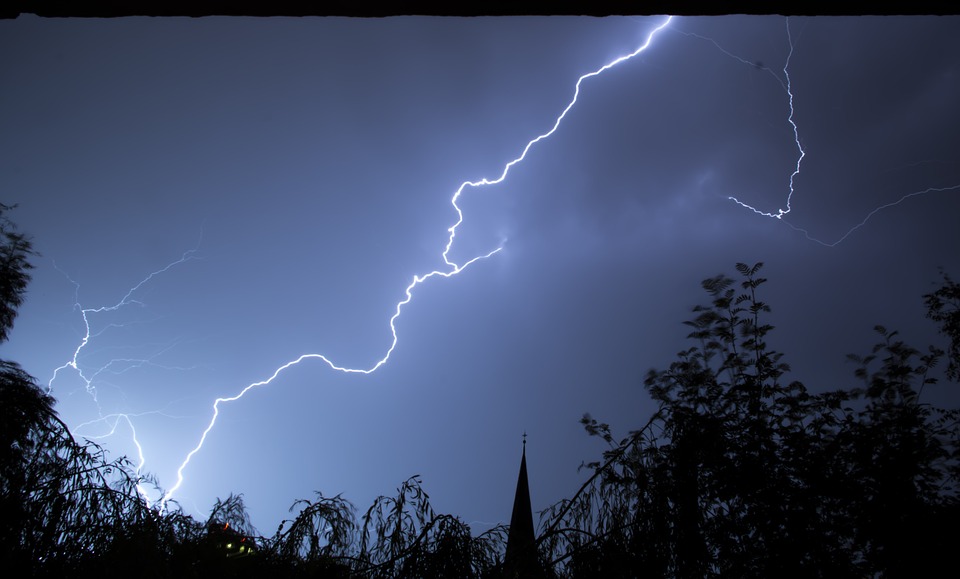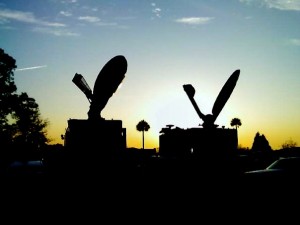Recently I stumbled across an important post to the “Storytellers” group on Facebook. (If you are in the TV news business and are not a member, here is link to join https://www.facebook.com/groups/TVNewsStroytellers/?epa=SEARCH_BOX.) One of the members told the story of recently having to tell the newsroom that, as the field crew, they did not feel safe doing a live shot in the location requested and that they then moved to a safer location. He asked members of the group what they thought. I was so happy to see that everyone who responded did so with the message of safety first. While I believe that this is the overall attitude in local newsrooms, but there can be exceptions.
I spent the final 16-years of my 28-year daily TV news career in Central Florida. Before that, I worked in the Cleveland, Greenville-Spartanburg-Asheville, Columbia, SC and Savannah markets. There are some universal truths no matter market size. The struggle over crew safety is one of them.
In Savannah, back in the early 1990’s, crew safety was often a concern because of the high rate (per capita) of violent crime. Crews were often asked to do live shots at the scene of volatile crime scenes. In my stops in the Carolinas, weather coverage, including hurricanes brought up the subject almost every year. In Cleveland, it was weather and crime.
Central Florida is no stranger to violent crime and associated live shots. But, in my experience, the overwhelming majority of crew safety issues have to do with weather coverage. The corridor along I-4, from Tampa to Daytona Beach is among the most lightning-prone on earth. During storm season lightning is a near daily occurrence during early evening news time. And as we all hopefully know, if you can hear thunder, you can be struck. The general lightning safety rule dictates staying indoors for a half hour after the last clap is heard. And, no, it does not matter if you are not in a live truck with a giant metal lightning rod sticking out the top. You can just as easily be struck if you are standing in a storm while live via a backpack unit or even just your smartphone.
While I was still working, requests for live shots during stormy weather were common. To be fair, the decision makers in the newsroom often do not know what the weather is like where each crew is at a given time. So, when the request comes in, it is up to the crew to let them know. If I could see lightning or hear thunder, I steadfastly refused to go live. Much of the time, it would be met with a huge sigh and a response of “Fine.” At times I would get a call back saying something like “Well, I see that (insert name or station here) is live at the same place. Why can’t you be live?” I still refused. No assignment is worth your health, safety or life.
There are other examples, especially during Florida’s annual hurricane season. But I will not belabor the point with more stories. Nearly all of us have been there. The important thing here is how should you handle it if this happens to you? Ultimately, you have to decide that for yourself. But, here’s what I did. I would first explain why we felt unsafe in as much detail as possible and with the videographer in the vehicle listening. If the newsroom still insisted, I would say something like: “O.K., I want to make sure we are on the same page as to what’s happening here. I am telling you that we do not feel safe. You are telling me that you want us to go live despite that fact… correct?” Most of the time, that shuts it down. However, sometimes it will not. Then offer a look live from a safer location. You have the right to flat out refuse as well.
I can hear some of you saying: “Yeah, but if I do that, I’m risking my job!” You may well be. But your job is not nearly as important as your health, safety or life. I can hear others saying: “Yeah, but I’m not gonna let the other guys beat me on a story or make me look bad.” Really? Grow up! Again, your safety is more important.
I can also hear some newsroom-based employees saying: “This is what you signed up for. This is just part of the job.” No. It is not. And remember radar data is often a few minutes behind, so its possible a crew sees lightning or hears thunder the meteorologist is not aware of yet. So there absolutely are times when journalists will find themselves in the middle of dangerous situations. And it happens more often than with non-journalists. However, we did not sign up to knowingly put ourselves in harms way. We did not sign up to knowingly risk our lives for a daily news story. There are always other ways to cover a story and impart the important information we did sign up to gather, without knowingly risking our lives.
To the journalist who started the thread in the Facebook “Storytellers” Group: Thank you!
To all of those who responded: “Safety first!” Thank you!
To all you who go out every day and work your tails off gathering news stories in the field: Thank you and always remember, no assignment is worth your health, safety or life!
———– Tom Johnson is a former 5-time Emmy winning local journalist who spent nearly 30-years working as an anchor, reporter, producer and videographer.



